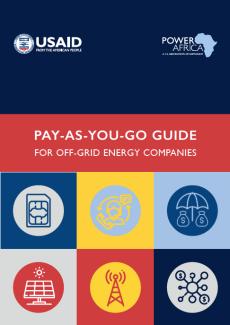Ever more off-grid companies (OGCs) across sub-Saharan Africa are adopting pay-as-you-go (PAYGO) business models, which allow customers to pay for off-grid products and electrification solutions over time. PAYGO allows new customers, who do not have significant savings or easy access to loans, to subdivide a product’s cost at the point of purchase into several smaller installments over months or years. OGCs may offer either a rent-to-own or service-based payment model. This flexibility helps lower-income customers, in particular those in off-grid rural areas, to overcome the high up-front costs of products, to gain access to electricity.
PAYGO systems often include remote monitoring software, which allows companies to collect data on system usage, identify faults, and disable systems remotely if customers do not pay. Remote monitoring drastically increases customers’ payment rates. A variety of PAYGO products are available. Solar home systems (SHS) may have lighting, mobile phone-charging, radio, and television capabilities. PAYGO cooking products may come equipped with liquefied petroleum gas (LPG) canisters. Productive use of energy (PUE) systems, such as solar water pumps, refrigerators, and grain mills, enable customers to engage in incomegenerating activities.
This guide serves as an introduction to PAYGO for OGCs. It outlines the major characteristics of a successful PAYGO business model, including the advantages and challenges of various PAYGO technologies, to assist OGCs to make informed business decisions. For more information about the Power Africa Off-grid Project, please see the contact information below.

